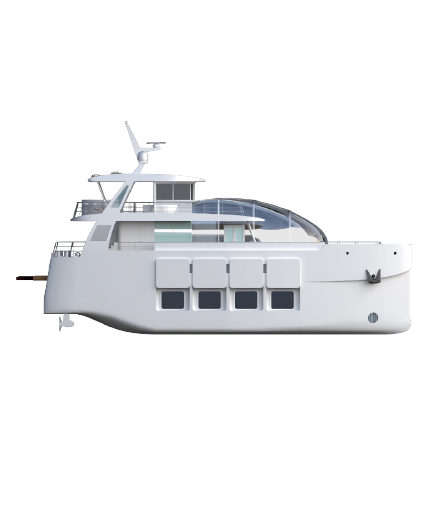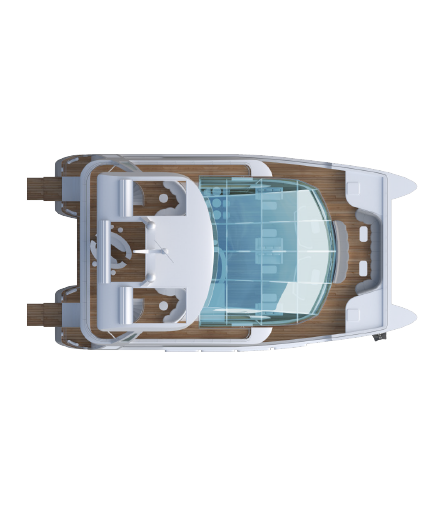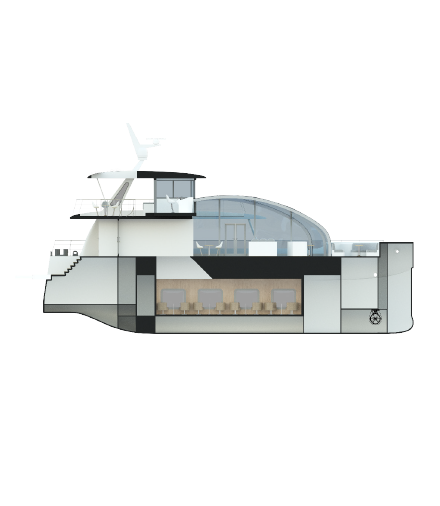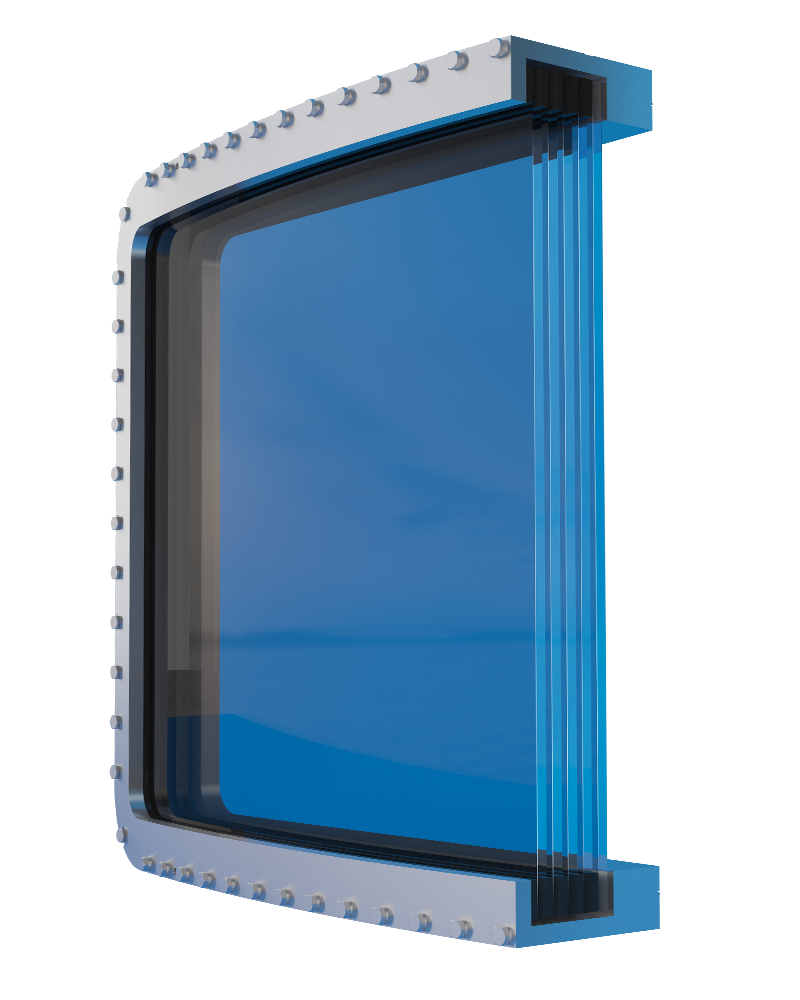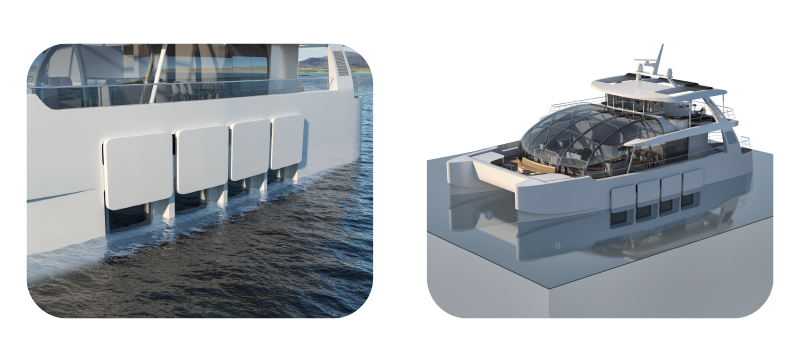The catamaran will be a fully independent passenger unit. The unit will have a durable steel and aluminium construction. Its task will be to perform about three hour-long cruises with a maximum group of 36 passengers, covering a two-hour long slow manoeuvring at a maximum draft, e.g. near coral reef, to observe underwater flora and fauna, on the electric drive. A superstructure made of bent mineral GlassWave glass will be installed on the main deck.
The superstructure will be an attraction for passengers and will allow them to enjoy the views not only underwater (through underwater windows), but also above water level thanks to the spectacular dome made of bent glass.
With appropriate equipment, it is possible to organise night dives from the unit.


